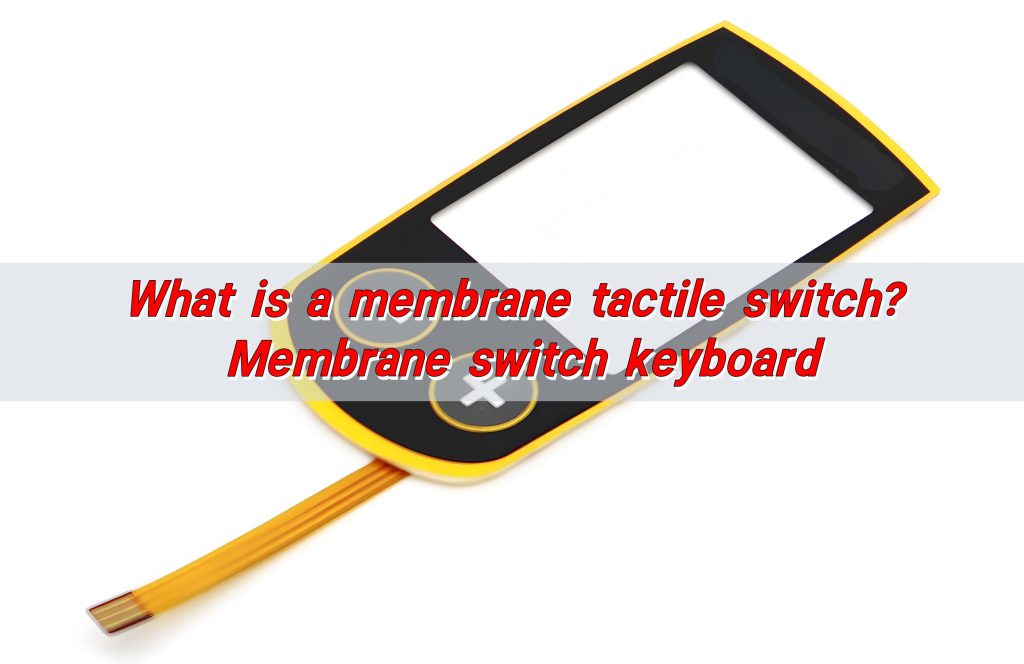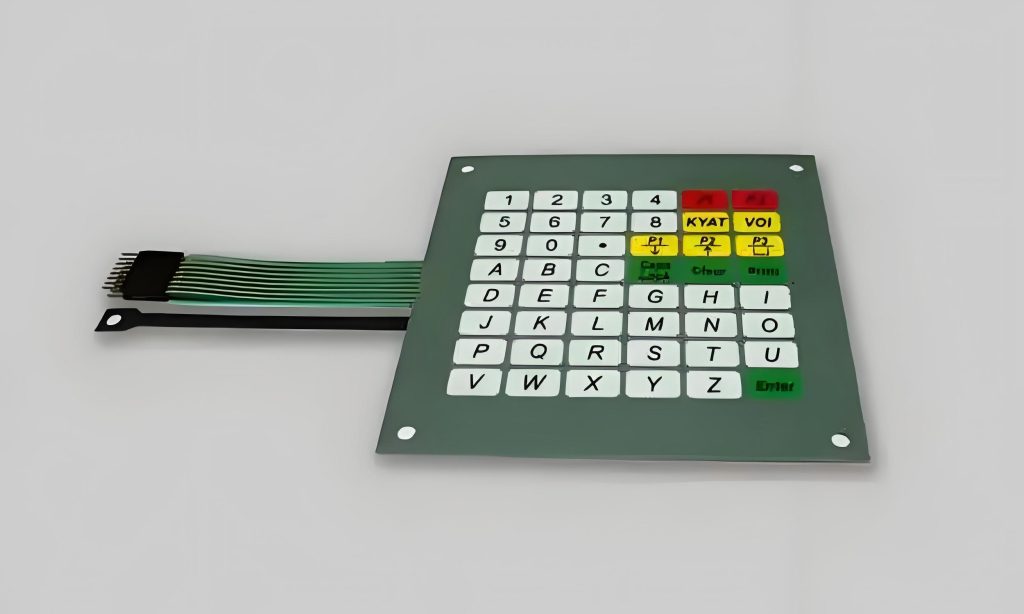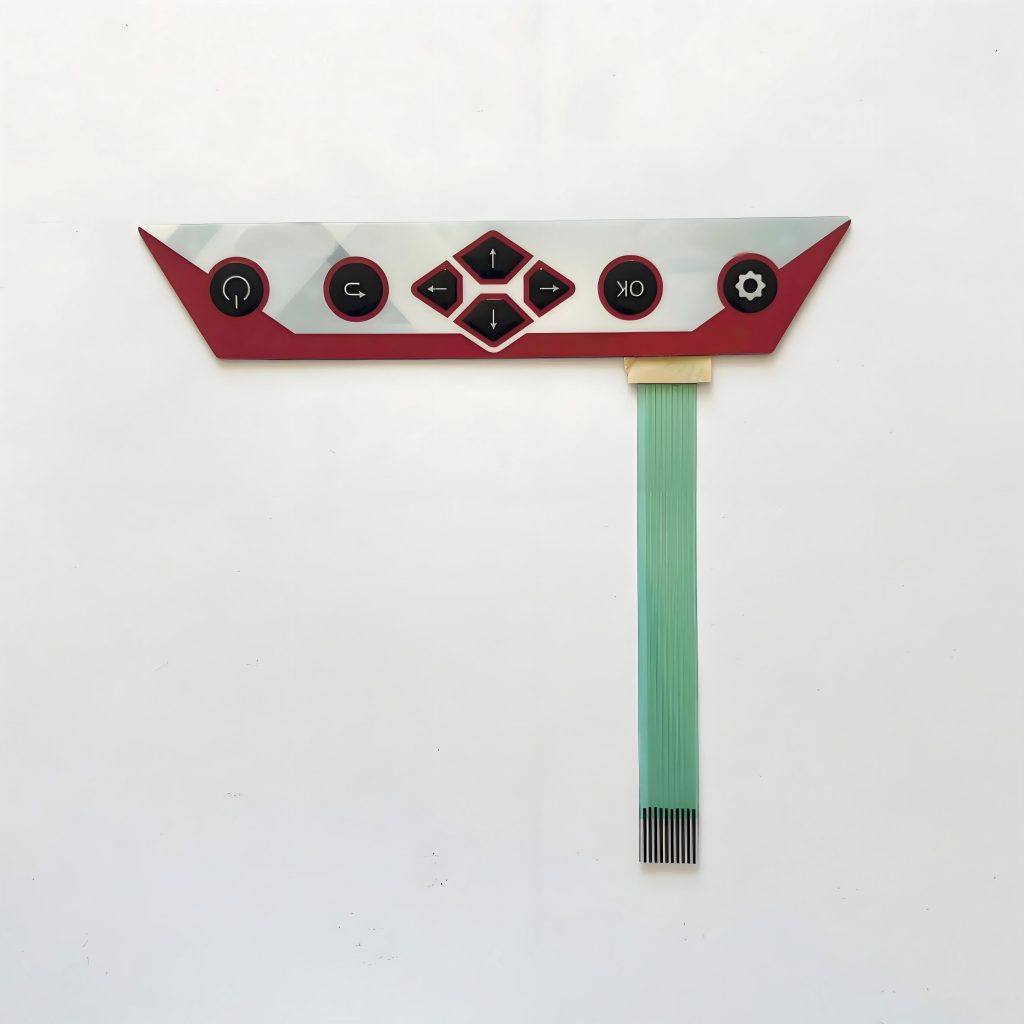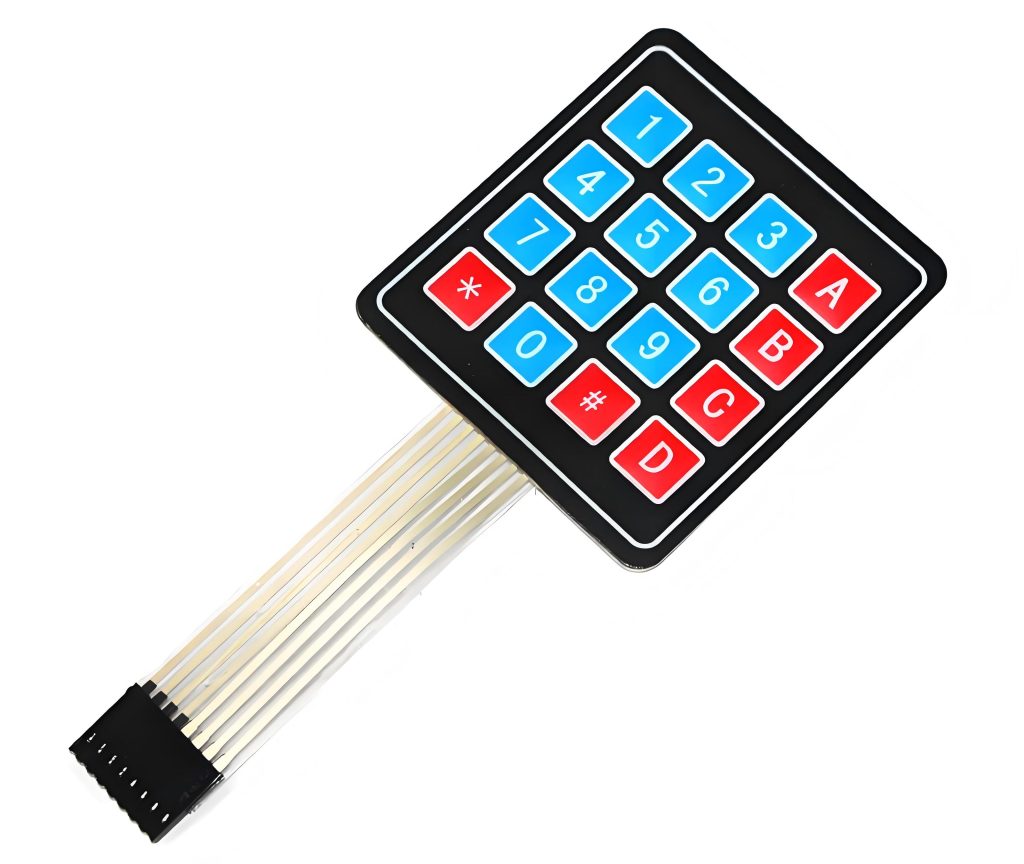
What is a membrane tactile switch? Membrane switch keyboard
What is a membrane tactile switch? Membrane switch keyboard
Membrane tactile switch is a thin, flexible electrical interface that provides a crisp, responsive click when pressed. Built with layered films and a small metal dome, it closes a circuit the moment you touch it, delivering accurate signals while staying sealed against dust and moisture.
This design keeps the device slim, durable, and easy to clean, making it ideal for control panels, medical equipment, and custom membrane switch keypads, where reliable feedback and long life are critical.

What are membrane switches?
Membrane switch is a thin electrical interface made of flexible layers. It acts as the bridge between the user and the circuit below. When you press a key, the top layer flexes and closes a contact on the circuit. This simple action sends a clean signal to the device.
Everyone likes this structure because it protects the circuitry from dust, moisture, and chemicals. The sealed surface makes cleaning easy and adds years to the product’s life. You can print custom graphics on the top film, match brand colors, and add clear windows for LEDs or displays.
Many manufacturers, including Yu An Electronics, provide full customization. They can change size, shape, color, and backlighting to fit almost any application. From medical equipment to consumer electronics, the versatility is remarkable.
What do membrane switches look like?
At first glance, a membrane switch looks like a smooth panel with printed icons or text. Each button sits flush with the surface, giving a modern, flat appearance. You will not see loose caps or moving parts.
Beneath the surface, several layers work together:
- Graphic overlay: the visible top film with printed designs.
- Spacer: a thin layer creating a small gap for movement.
- Circuit layer: copper or silver traces that carry signals.
- Adhesive backing: secures the switch to the product housing.
When a user presses a button, the top layer flexes downward. This closes the gap and connects the circuit below.
Engineers can add metal domes for tactile feedback. These domes create a crisp click when pressed, which many users find satisfying. Designers can also include LEDs for backlighting, making the panel easy to see in dark settings.
What is the difference between membrane and tactile switches?
Here’s the key point: a membrane tactile switch combines the membrane design with tactile feedback. Traditional membrane switches are smooth and quiet. Tactile membrane switches use small metal domes or other mechanisms to add a distinct snap.
This extra feedback helps operators confirm each press without looking. It improves accuracy and reduces mistakes in fast-paced environments.

Pure mechanical tactile switches, on the other hand, are thicker and heavier. They have separate moving parts and may require more maintenance. A membrane tactile switch keeps the slim profile while giving a pleasant click, making it ideal for compact products.
How to tell if a keyboard is membrane or mechanical?
Look for a single smooth overlay instead of raised, individual keycaps. Press a button. If you feel a soft press or a subtle snap from a thin surface, it’s likely a membrane tactile switch.
Check the thickness. Membrane designs are very thin and usually sealed.
Mechanical keyboards have larger moving parts and key travel you can see and hear.
Membrane switch keyboards stay slim and flat while still offering a satisfying touch.
Can membrane keyboards be tactile?
Yes. A tactile membrane switch is specifically built to provide a crisp feel. Metal domes sit under each button and collapse when pressed. The dome springs back, giving both sound and sensation.
This feedback is valuable in professional settings. Operators can sense each activation, even while wearing gloves or working in dim light. It reduces the chance of accidental double presses and improves workflow speed.
What are the downsides of membrane keyboards?
Membrane technology has many benefits, yet no design is perfect. The main limitations are:
- Lower key travel compared with heavy mechanical switches.
- If not sealed well, repeated flexing can cause wear over many years.
However, high-quality production solves most concerns. Modern materials and precise engineering now allow over a million actuations per button. Proper sealing and the use of premium metal domes extend life and keep performance stable.
How to extend the life of membrane switches?
You can maximize service life with simple practices:
- Clean gently with a soft cloth and mild cleaner.
- Avoid sharp tools that might puncture the overlay.
- Check sealing during design to keep out dust and moisture.
- Use quality components such as high-grade adhesives and domes.

Yu An Electronics follows ISO9001:2015 standards and uses robust materials. Our engineering teams stress-test every design millions of times.
What is a membrane switch used for?
The range of uses is impressive. You will find membrane tactile switches in:
- Medical monitors and diagnostic equipment
- Industrial control panels
- Consumer electronics and appliances
- Automotive dashboards and key fobs
- Military and aerospace devices
- Fitness and wearable gear
These applications share a need for sealed surfaces, low profile, and reliability.
How do PCB surface-mount tactile membrane switches save space?
When every millimeter counts, Yu An Electronics often chooses PCB surface mount tactile membrane switches. In this setup, the switch mounts directly to the printed circuit board. This method removes the need for extra brackets or wiring.
The result is a thinner device with fewer assembly steps. It also improves electrical accuracy because the contact point is close to the board’s traces.

Yu An Electronics offers advanced tape & reel packaging for these components. This format feeds directly into high-speed pick-and-place machines. Placement can reach tens of thousands of domes per hour, cutting labor costs and boosting consistency.
Conclusion:
Membrane tactile switches combine sleek design, protective sealing, and satisfying feedback. They fit into tight spaces, resist dust and moisture, and give users a clear response with every press.
With careful cleaning and quality manufacturing, they last for millions of activations. For detailed specifications, custom quotes, or technical support, contact sales@best-membraneswitch.com

Top Membrane Switches for Home Electronics Projects in 2025
You can elevate your home electronic membrane switch project in 2025 with standout models such as the 4×4 Matrix 12 Keys Keypad from SOUSHINE, the rgb-enabled strip switches from Molex, and custom graphic switches by Panasonic. These switches offer slim profiles and reliable performance, making them easy to integrate into your DIY setup. You gain ...

Top tips for fixing PS4 controller conductive film keypads
Are you frustrated because your PS4 controller buttons have stopped working? You are not alone. Many gamers experience issues with the conductive film keypad for ps4. Button failures often happen because of dirt, debris, or rough handling. Take a look at the most common causes: Cause Description Dirt and debris Accumulation in button crevices can ...

Top Membrane Switch Companies Leading the Industry in 2025
You see a dynamic market shaping the future of membrane switch technology. Leading companies like Molex, SOUSHINE, YU AN Electronics, TE Connectivity, Honeywell, Omron, Mitsubishi Electric, Panasonic, Industrial Print Technologies, SCHURTER, XYMOX, Douglas Corp, Dyna-Graphics, ELO Touchscreens, UTC, LUNFENG Technology, and Fujikura drive growth with innovation and global reach. Choosing the right membrane switch company ...
Contact us online